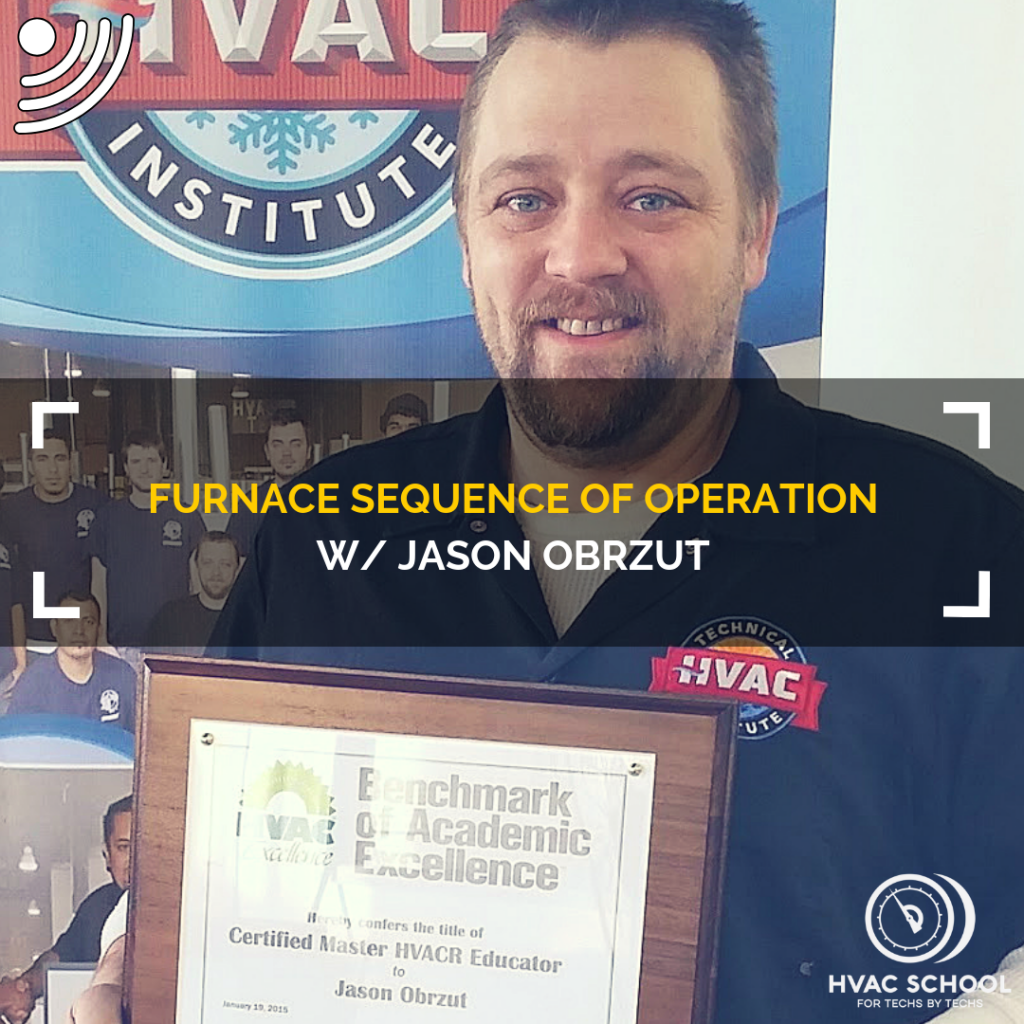Furnace Sequence Of Operation (Podcast)

Jason Obrzut comes on the podcast and talks us through his furnace sequence of operation training: “Take It Slow, It's Gonna Blow!”
There are 6 main steps in Jason's furnace sequence of operation training. The phrase, “Take It Slow, It's Gonna Blow!” should help you remember the sequence (Thermostat, Inducer motor, Safety switch, Igniter, Gas valve, Blower motor).
The first component in the furnace sequence of operation is the thermostat, which initiates the call for heat. So, the thermostat has to send the signal to the circuit board. After the board receives that signal, it sends 120v out of the board to the inducer motor.
Next, the inducer pulls the gas combustion air into the heat exchanger. That air will then be deposited into the exhaust. The inducer is what aids the venting action and is a critical part of a furnace.
The safety switch is a general term for a negative pressure switch with a hose connected to the inducer housing or heat exchangers. Negative pressure from the inducer motor will close that switch. When that switch closes, 24v goes back into the board.
Then, the board sends a signal to the igniter. Now, you will finally begin to see heat delays. Silicon carbide and silicon nitride are common igniter materials nowadays, but they are fragile.
Once the igniter has worked long enough, the gas valve opens. We get 24v from the board to the gas valve, which brings on the gas flow and starts a timer.
When the timer expires, the blower motor will come on. This component is the LAST one to come on.
Jason and Bryan also discuss:
- Pressures on the flue
- Cracked heat exchangers
- Safeties not closing
- Hot-surface vs. intermittent-spark vs. direct-spark ignition
- Flame sensors and proving flame
- DIP switches
Learn more about Refrigeration Technologies HERE.
If you have an iPhone, subscribe to the podcast HERE, and if you have an Android phone, subscribe HERE.
Author:










Comments
To leave a comment, you need to log in.
Log In